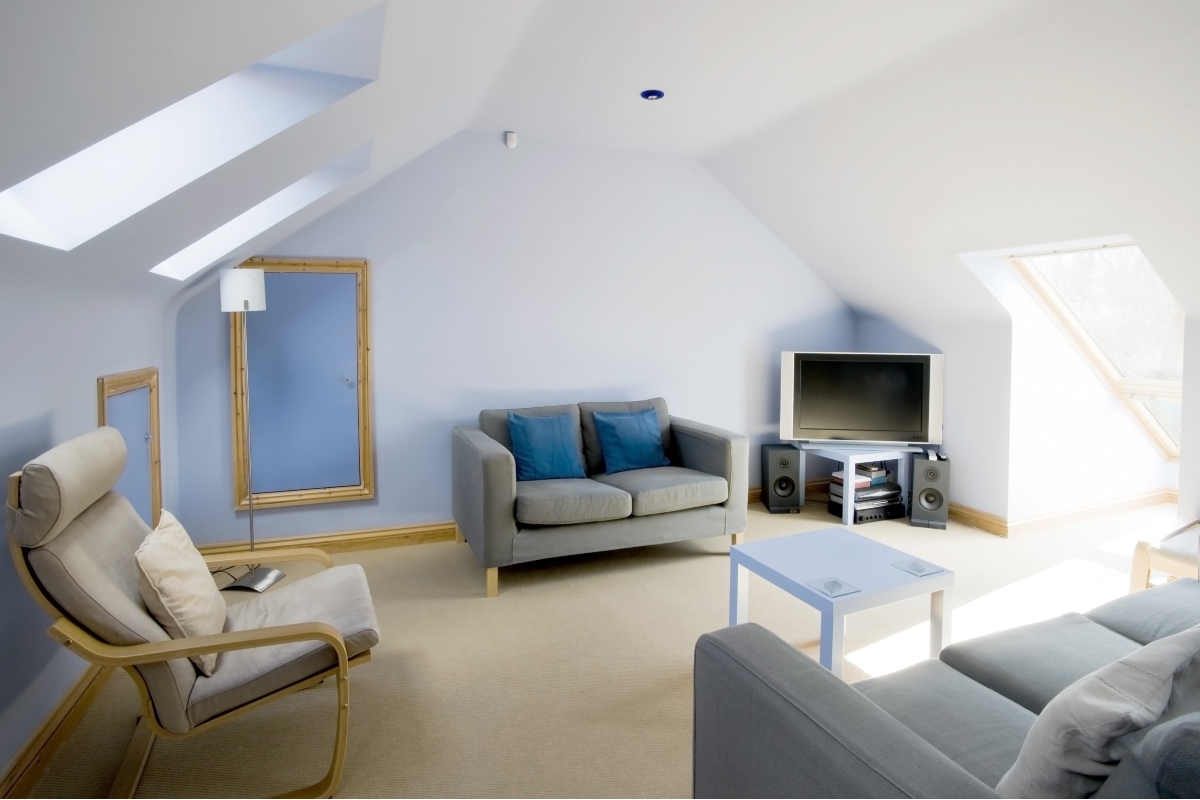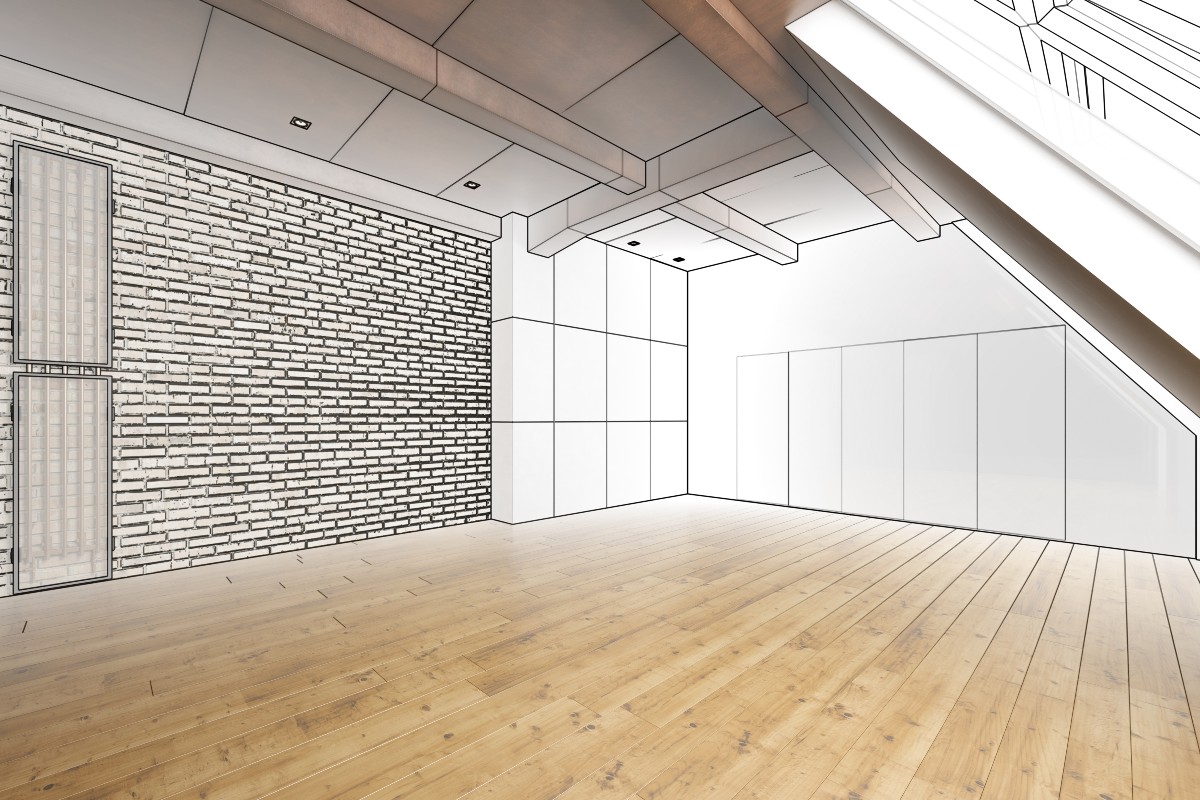A loft conversion is one of the most rewarding ways to create more space in your home. Whether you want an extra bedroom, a home office or a peaceful living space tucked away from the busier parts of the house, converting the...
When embarking on a kitchen renovation or new build, choosing the right kitchen fitter is one of the most crucial decisions you'll make. Whether you’re replacing kitchen worktops, installing new kitchen units, or overhauling your existing kitchen, a skilled professional kitchen fitter ensures the installation is completed to a very high standard, on time and within budget.
Here's a comprehensive guide to what to look for when hiring the right professional for the job.
Understanding the Role of a Kitchen Fitter
A kitchen fitter is a skilled tradesperson who specialises in the installation and finishing of kitchens, playing a vital role in bringing your design plans to life. Whether you're starting from scratch to create your dream kitchen or renovating an existing space, a professional kitchen fitter ensures that every component is expertly installed, safe, and fully functional.
Their typical tasks include assembling and installing kitchen units, fitting integrated and freestanding appliances, and managing plumbing and electrical connections. Many fitters also carry out or coordinate complementary work such as tiling, flooring, plastering, and decorating. In larger projects, particularly full home renovations, they often collaborate with specialist trades like electricians, gas engineers, and tilers to deliver a seamless finish across multiple rooms, including adjacent spaces like a new bathroom or utility room.
Some kitchen fitters work independently, while others operate as part of a larger kitchen fitting or renovation company. Those with broader experience may act as project managers, coordinating all aspects of the installation—from initial measurements and material sourcing to final snagging and customer sign-off.
Professionals with experience
This role demands technical precision, spatial awareness, and a strong ability to problem-solve, especially when dealing with older homes where walls may be uneven, or when retrofitting modern units into tight or irregular layouts. They must be comfortable interpreting design plans and technical drawings, and adapting them on-site as needed.
A high-quality kitchen fitter doesn't just install units—they help you create a space that enhances daily life, adds value to your home, and stands the test of time. Their attention to detail and knowledge of best practices across various trades can also influence decisions beyond the kitchen itself, including open-plan transitions, integrated lighting, or matching finishes in a new bathroom or utility area.
Ultimately, the role of a kitchen fitter goes far beyond putting cupboards on a wall. They are multi-skilled professionals who combine craftsmanship with coordination of specialist trades to deliver a kitchen that is both beautiful and built to last.
Qualifications and Certifications
Hiring a professional with the appropriate qualifications is essential to ensure a safe, compliant, and high-quality kitchen installation. These credentials demonstrate that the kitchen fitter has undergone formal training and possesses the skills required to carry out complex tasks with precision and care.
Look for the following:
- NVQs or City & Guilds certifications in carpentry, plumbing, or kitchen fitting – These qualifications confirm that the individual has completed industry-recognised training and assessments, providing a solid foundation in the technical and practical aspects of kitchen installation.
- Gas Safe registration – If your project involves the installation or relocation of gas appliances, such as hobs or boilers, the fitter must be registered with Gas Safe. It’s illegal for anyone who is not Gas Safe registered to work on gas systems in the UK.
- NICEIC registration – Any electrical work, such as wiring appliances, installing under-cabinet lighting, or adding new sockets, should be carried out by someone registered with NICEIC (or a similarly recognised body). This ensures compliance with building regulations and electrical safety standards.
These credentials not only prove competence but also offer protection. A qualified kitchen fitter will be familiar with the latest building codes, manufacturer specifications, and best practices for working with a range of materials and appliances.
Don't hesitate to:
- Ask to see proof of certification.
- Verify registration numbers through official trade websites.
- Confirm whether the fitter is authorised to sign off on plumbing, gas, or electrical work.
In addition to individual qualifications, consider whether the professional is a member of reputable trade organisations. Membership in bodies such as the Federation of Master Builders (FMB) or TrustMark indicates a commitment to high standards, accountability, and ongoing professional development. These organisations often require members to meet specific criteria, carry adequate insurance, and agree to independent inspections or customer charters.
Some kitchen fitters may also be affiliated with specialist trades or manufacturer-approved installation schemes (e.g., for specific cabinet or appliance brands), which can provide additional peace of mind, especially if your project involves high-end materials or integrated systems.
Ultimately, qualifications are about more than paperwork. They reflect a kitchen fitter’s dedication to their craft, their legal compliance, and their ability to safely manage complex installations involving multiple specialist trades. Hiring a properly qualified professional protects your investment and ensures your new kitchen functions flawlessly from day one.

Experience and Track Record
Experience is often as important as qualifications. An experienced kitchen fitter will be equipped to manage complications that arise during installation. Ask to see:
- A portfolio of completed kitchen installations.
- References or reviews from previous customers.
- Before and after photos to assess the end result.
It’s also worth asking how many years they’ve been in the industry, what types of kitchens they’ve worked on (bespoke vs flat-pack, modern vs traditional), and whether they’ve handled similar properties to yours. A fitter with extensive experience in listed buildings or period properties, for example, may be better suited to your project if your home has unique constraints.

Services Offered
A reliable kitchen company or independent contractor may provide a range of services, from simple unit fitting to comprehensive project management. It’s important to clarify exactly what is included before work begins, as this can significantly affect the scope, cost, and timeline of your renovation.
Look for whether they offer:
- Full kitchen installation, including essential services such as plumbing, electrical work, gas connections, tiling, and flooring. A comprehensive package ensures that all aspects of the renovation are handled by one coordinated team or project manager.
- Supply and fitting of materials, such as kitchen units, worktops, sinks, and appliances. Some fitters will only provide labour, meaning you’ll need to order and check all items yourself. Others offer a turnkey service—helping you choose materials, placing the orders, and arranging delivery—minimising hassle and delays.
- Related services, such as utility room conversions, new bathroom installations, or home office setups. This is particularly valuable if you’re renovating multiple rooms or want a consistent finish throughout the home. Fitters who work regularly with specialist trades can ensure that adjoining rooms are designed and installed to the same standard.
- Access to a showroom, supplier catalogues, or sample materials for inspiration and selection. This can be helpful if you're unsure about finishes, colour schemes, or product specifications. Some companies may also offer 3D design services to help visualise the final layout.
If a fitter only offers labour-based fitting, you’ll need to coordinate delivery of all materials and double-check that everything—from fixtures to handles—has arrived before installation begins. This approach gives you greater control over sourcing but requires more planning and logistics on your part.
In contrast, companies offering a design-to-installation service can manage every aspect of the process, from the initial concept and layout planning to the final fitting and snagging. This often results in smoother scheduling, reduced delays, and clearer communication, as one team is accountable for the entire project.
Additionally, some kitchen fitters are affiliated with or recommend trusted specialist trades such as Gas Safe engineers or NICEIC-registered electricians. This can help streamline the process and ensure that all installations meet current regulations.
Ultimately, the right service package depends on your needs, budget, and how involved you want to be in the day-to-day management of the project. For a stress-free experience and high-quality finish, many homeowners opt for a provider that can handle everything in-house, from initial design ideas to the final polish.

Initial Consultation and Site Visit
A thorough initial consultation sets the tone for your project. During this phase, the fitter should:
- Visit the property to assess the existing kitchen or new build layout.
- Discuss your design preferences, budget, and required materials.
- Offer advice on kitchen worktops, cabinets, sink, and appliances.
- Provide a detailed quote including labour and installation costs.
A good fitter will take the time to understand your vision and provide honest, practical feedback. Are you trying to fit an island into a small galley kitchen? Do you want handleless doors in a high-traffic area with kids? The consultation should address all of this.
Customisation and Suitability
Your kitchen should reflect your lifestyle and taste. A quality fitter will help you:
- Customise your layout to maximise space and efficiency.
- Choose fittings and finishes that suit your style, whether traditional or modern.
- Select the right cupboards, doors, and worktops for your needs.
Additionally, they can suggest space-saving innovations such as pull-out corner units, soft-close drawers, and integrated storage systems that improve practicality without sacrificing style. Customisation should also consider lighting, workflow (cooking triangle), and accessibility for family members of all ages.
Project Planning and Timelines
A clear plan is essential for a successful kitchen installation. A professional fitter should:
- Provide a project timeline with start and completion dates.
- Coordinate with other trades for a seamless process.
- Keep you informed of progress and any changes.
Make sure the timeline includes contingencies for unexpected issues, like delays in delivery or discovery of water damage behind old units. Ask how they handle setbacks and whether they provide a project manager or a single point of contact for coordination.
Budget and Cost Transparency
Understanding the full scope of installation costs prevents budget surprises. Ask for:
- A breakdown of materials needed, labour, and any additional fees.
- Clear policies on unexpected costs or changes.
- Flexible options to suit different budgets, from basic to high-end finishes.
Beware of unusually low quotes—they can sometimes lead to upselling later or poor-quality materials. A detailed quote should specify the brand and model of components being installed and what’s included (e.g., removal of old kitchen, disposal, minor repairs, etc.).
Communication and Customer Service
Good communication is vital. Look for a team that is:
- Responsive and helpful during enquiries.
- Willing to explain processes and timelines.
- Committed to providing excellent service and ensuring customer satisfaction.
Gauge how they respond to your initial questions. Are they prompt, clear, and courteous? Communication issues at the start can be a red flag for future delays or misunderstandings.
Workmanship and Finish
The quality of workmanship speaks volumes. Check for:
- Neat and precise installation of all units and surfaces.
- Seamless tiling, levelled flooring, and functional appliances.
- Careful attention to detail ensures a polished end result.
You can often spot an excellent fitter by their finishing touches: even spacing, aligned doors, concealed joints, and smooth transitions. Ask to inspect a completed project if possible, or request photos showing close-up craftsmanship.
Product Warranties and Guarantees
Ensure the kitchen company or contractor provides:
- Manufacturer warranties for all supplied units and appliances.
- Guarantees for their services and installation work.
- Documentation outlining terms, conditions, and coverage periods.
Having this paperwork protects you if anything goes wrong post-installation. Don’t assume everything is covered—ask what’s included and for how long, especially for plumbing or electrical work.
Aftercare and Support
The relationship shouldn’t end the day after installation. A reliable professional will:
- Offer aftercare or snagging services.
- Provide advice on maintaining your new kitchen.
- Be available for any adjustments or fixes post-installation.
Some companies offer follow-up visits a few weeks later to address any minor issues that arise as your new kitchen "settles."

What to watch out for
Avoid unnecessary stress by steering clear of fitters who:
- Don’t offer contracts or written quotes.
- Have vague or unclear timelines.
- Can’t provide proof of insurance or qualifications.
- Rush the job or lack attention to detail.
Trust your instincts. If something feels off during your initial conversations or site visit, take the time to speak with other professionals. Comparing quotes, communication style, and enthusiasm for your project can help you make a confident, informed decision.
A truly professional kitchen fitter won’t just build your kitchen—they’ll respect your home, your budget, and your expectations every step of the way. Also, be cautious of tradespeople who pressure you into quick decisions or fail to answer your questions clearly.
Final Thoughts
Choosing a kitchen fitter is about more than just the cost. It's about finding someone with the right mix of skills, experience, and attitude to deliver the kitchen you envision. By investing time in the selection process, requesting clear quotes, and reviewing the project plan thoroughly, you’ll be in safe hands.
The end result? A functional, beautiful space that enhances your house and adds value to your property.
If you're considering a full renovation that includes a bathroom or utility room, companies like Bathrooms Ltd often provide comprehensive services to handle everything from supply to final installation, ensuring consistency and a very high standard of finish throughout your home.
For your next project, take your time, ask questions, and hire wisely—because a kitchen isn’t just another room. It’s the heart of your home.
The Conversion Guy - A Professional Bathroom Fitter serving Derbyshire & Staffordshire
Are you ready to take the plunge and transform your bathroom into an oasis? Well, look no further! The Conversion Guy is committed to providing you with a bathroom renovation experience that is unparalleled.
With over 40 years of experience in bathroom remodelling, we are looking forward to helping you create the most amazing bathroom of your dreams! We love talking bathrooms, so be sure to get in touch today or book a free consultation and start your journey towards creating the perfect bathroom retreat!
From the Learning Centre
Explore our resources and learn about pricing, bathroom refits, kitchen kitchen renovations, loft conversions and many other home improvements in our Learning Centre






